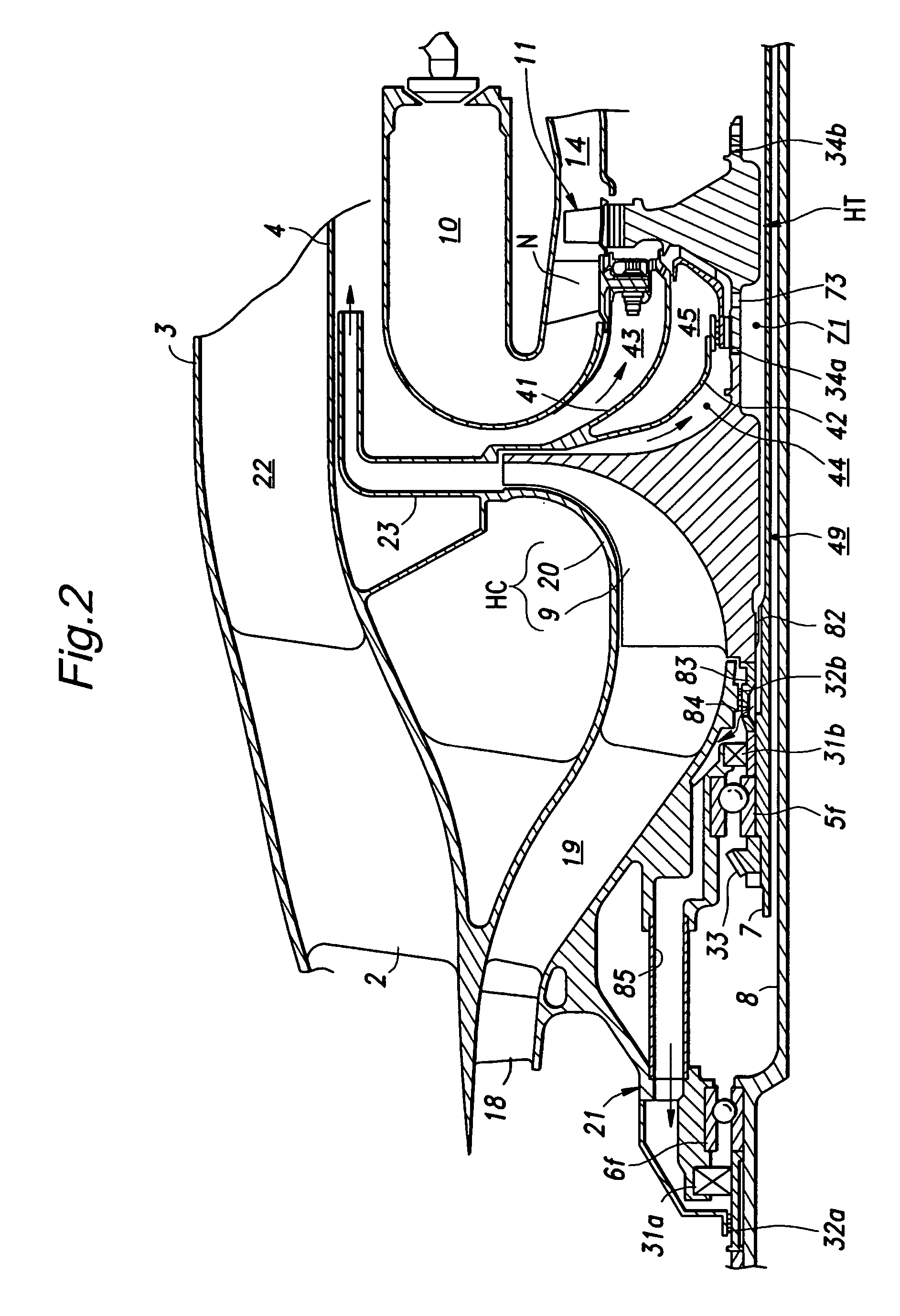Device for supplying secondary air in a gas turbine engine
a gas turbine engine and secondary air technology, which is applied in the direction of machines/engines, sustainable transportation, mechanical equipment, etc., can solve the problems of premature degradation of lubricating oil, affecting the overall efficiency of the engine, and preventing adequate cooling, so as to promote energy dissipation, simplify the overall structure, and avoid the effect of affecting the overall efficiency
- Summary
- Abstract
- Description
- Claims
- Application Information
AI Technical Summary
Benefits of technology
Problems solved by technology
Method used
Image
Examples
Embodiment Construction
[0023]FIG. 1 is a schematic view of a multiple shaft bypass jet engine embodying the present invention. This engine 1 comprises an outer casing 3 and an inner casing 4 consisting of coaxially arranged cylindrical members joined to each other by struts 2, and an outer shaft 7 and an inner shaft 8 consisting of coaxially arranged hollow shafts centrally supported in the casings by independent bearings 5f, 5r, 6f and 6r.
[0024]The outer shaft 7 has a front end (left end in the drawing) integrally carrying an impeller wheel 9 of a high pressure centrifugal compressor HC, and a rear end (right end in the drawing) integrally carrying a high pressure turbine wheel 11 of a high pressure turbine HT provided adjacent to nozzles N of counter-flow combustion chambers 10.
[0025]The inner shaft 8 has a front end integrally carrying a front fan 12 and a compressor wheel 13 supporting rotor vanes for a low pressure axial flow compressor LC immediately behind the front fan 12, and a rear end integral...
PUM
 Login to View More
Login to View More Abstract
Description
Claims
Application Information
 Login to View More
Login to View More - R&D
- Intellectual Property
- Life Sciences
- Materials
- Tech Scout
- Unparalleled Data Quality
- Higher Quality Content
- 60% Fewer Hallucinations
Browse by: Latest US Patents, China's latest patents, Technical Efficacy Thesaurus, Application Domain, Technology Topic, Popular Technical Reports.
© 2025 PatSnap. All rights reserved.Legal|Privacy policy|Modern Slavery Act Transparency Statement|Sitemap|About US| Contact US: help@patsnap.com



